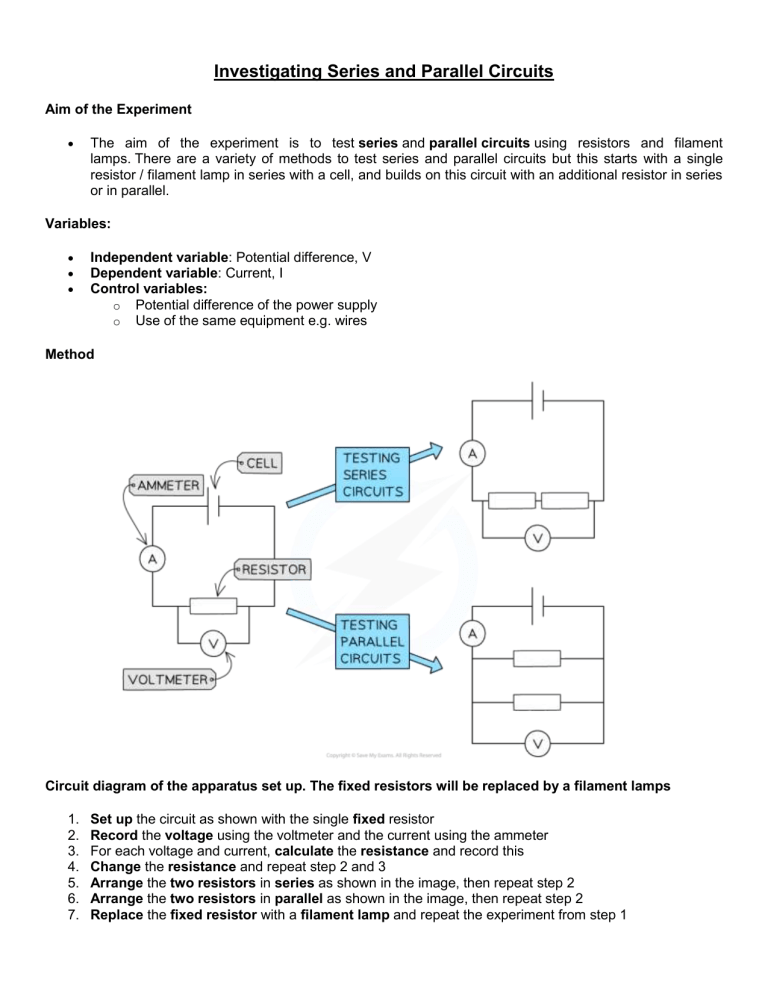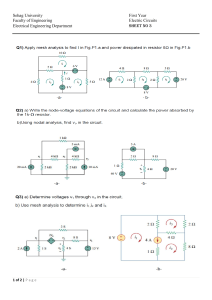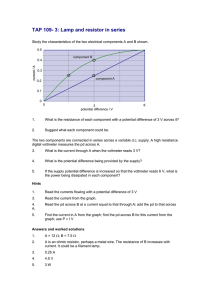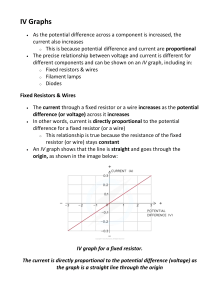
Investigating Series and Parallel Circuits Aim of the Experiment The aim of the experiment is to test series and parallel circuits using resistors and filament lamps. There are a variety of methods to test series and parallel circuits but this starts with a single resistor / filament lamp in series with a cell, and builds on this circuit with an additional resistor in series or in parallel. Variables: Independent variable: Potential difference, V Dependent variable: Current, I Control variables: o Potential difference of the power supply o Use of the same equipment e.g. wires Method Circuit diagram of the apparatus set up. The fixed resistors will be replaced by a filament lamps 1. 2. 3. 4. 5. 6. 7. Set up the circuit as shown with the single fixed resistor Record the voltage using the voltmeter and the current using the ammeter For each voltage and current, calculate the resistance and record this Change the resistance and repeat step 2 and 3 Arrange the two resistors in series as shown in the image, then repeat step 2 Arrange the two resistors in parallel as shown in the image, then repeat step 2 Replace the fixed resistor with a filament lamp and repeat the experiment from step 1 Observations An example of a suitable table might look like this: Analysis of Results The value of the resistance for each voltage and current reading is calculated using the equation: In series, the total resistance of the two resistors is equal to the sum of the two individual resistances In parallel, the total resistance of the two resistors is less than either of the two individual resistances Evaluating the Experiment Systematic Errors: The voltmeter and ammeters should start from zero, to avoid zero error in the readings Random Errors: In practice, the voltmeter and ammeter will still have some resistance, therefore the voltages and currents displayed may be slightly inaccurate The temperature of the equipment could affect its resistance. This must be controlled carefully Taking multiple readings of the current for each component will provide a more accurate result and reduce uncertainties Safety Considerations When there is a high current and a thin wire, the wire will become very hot o Make sure never to touch the wire directly when the circuit is switched on Switch off the power supply right away if burning is smelled Make sure there are no liquids close to the equipment, as this could damage the electrical equipment The components will get hot, especially at higher voltages o Be careful when handling them - especially the filament lamp Disconnect the power supply in between readings to avoid the components heating up too much










